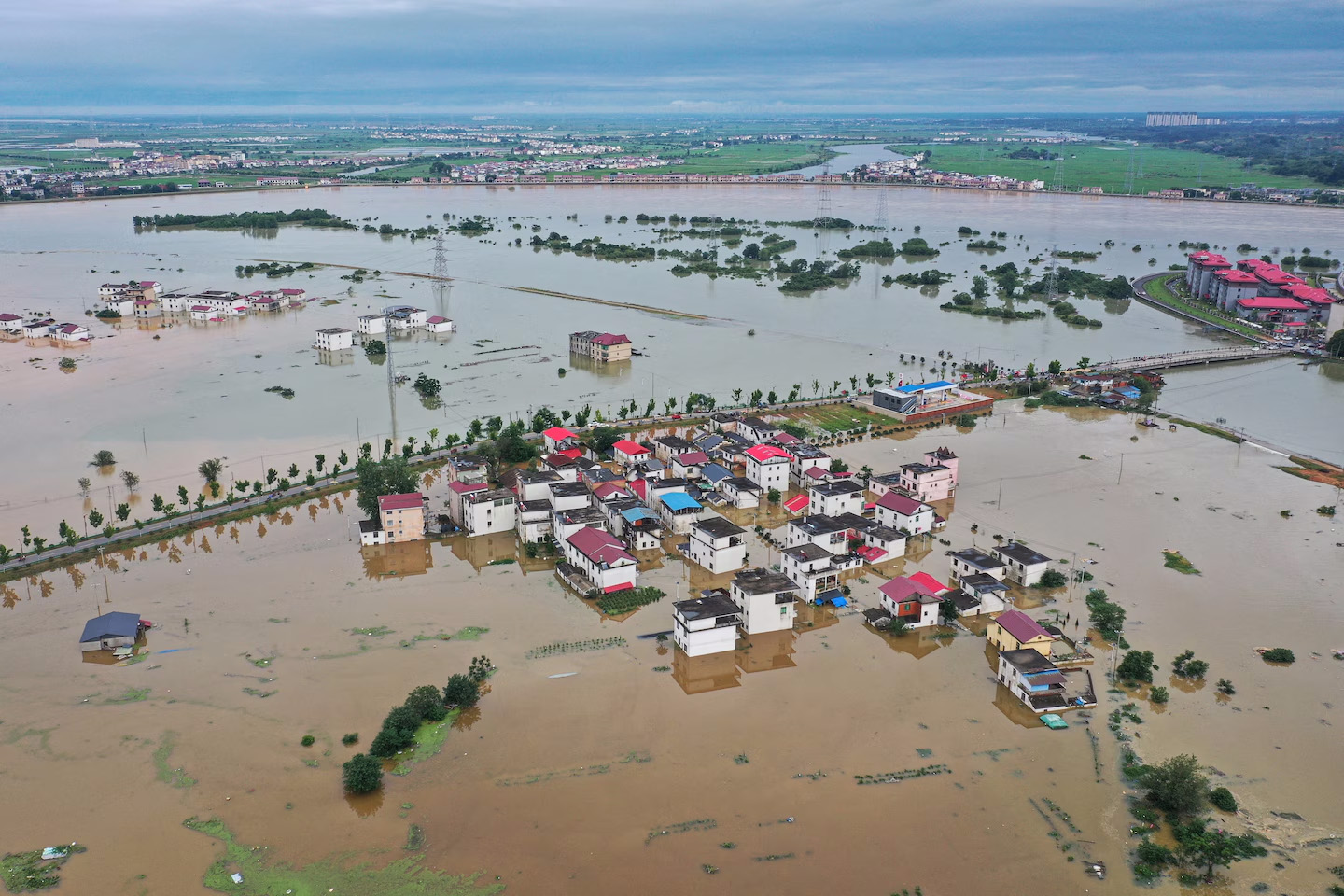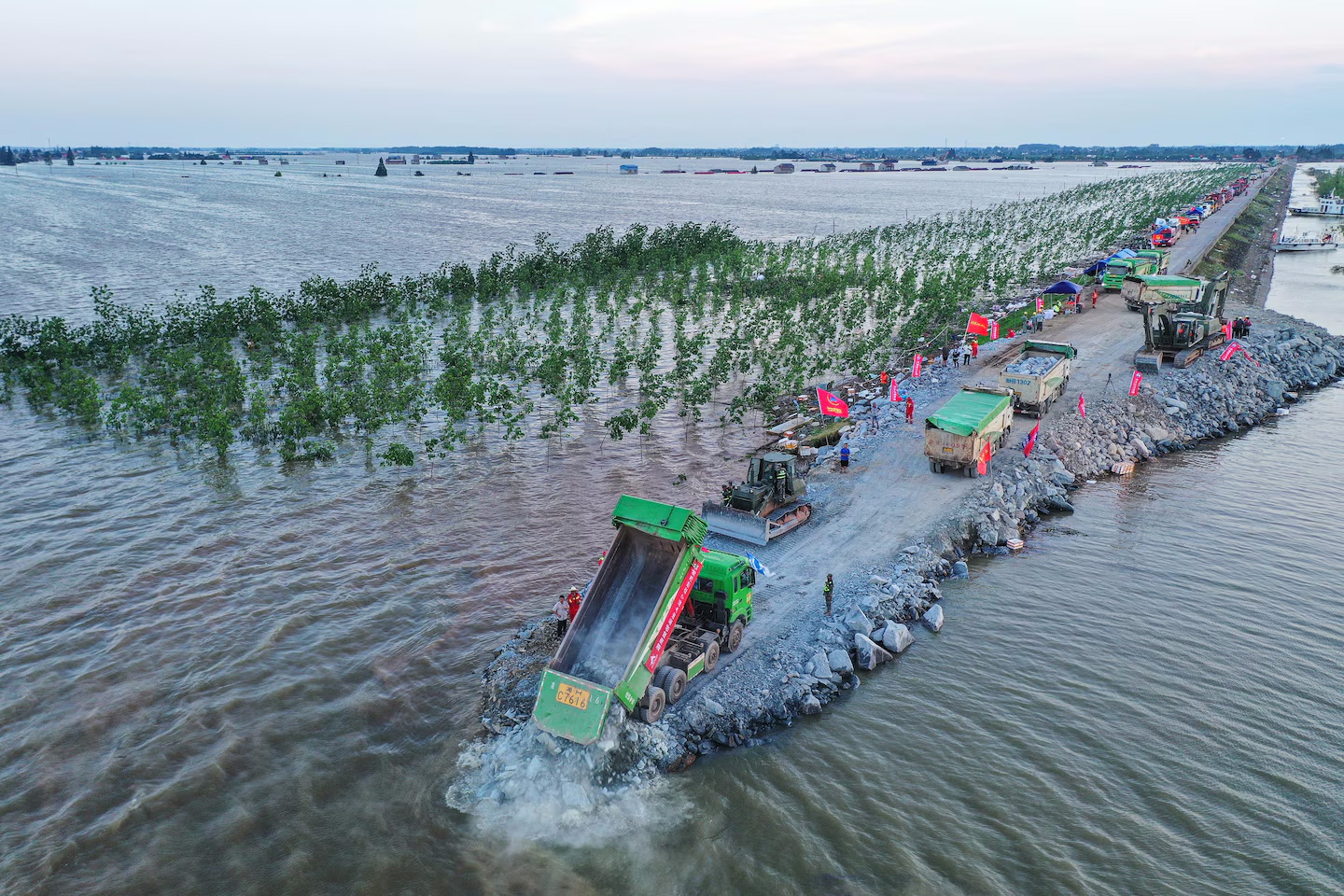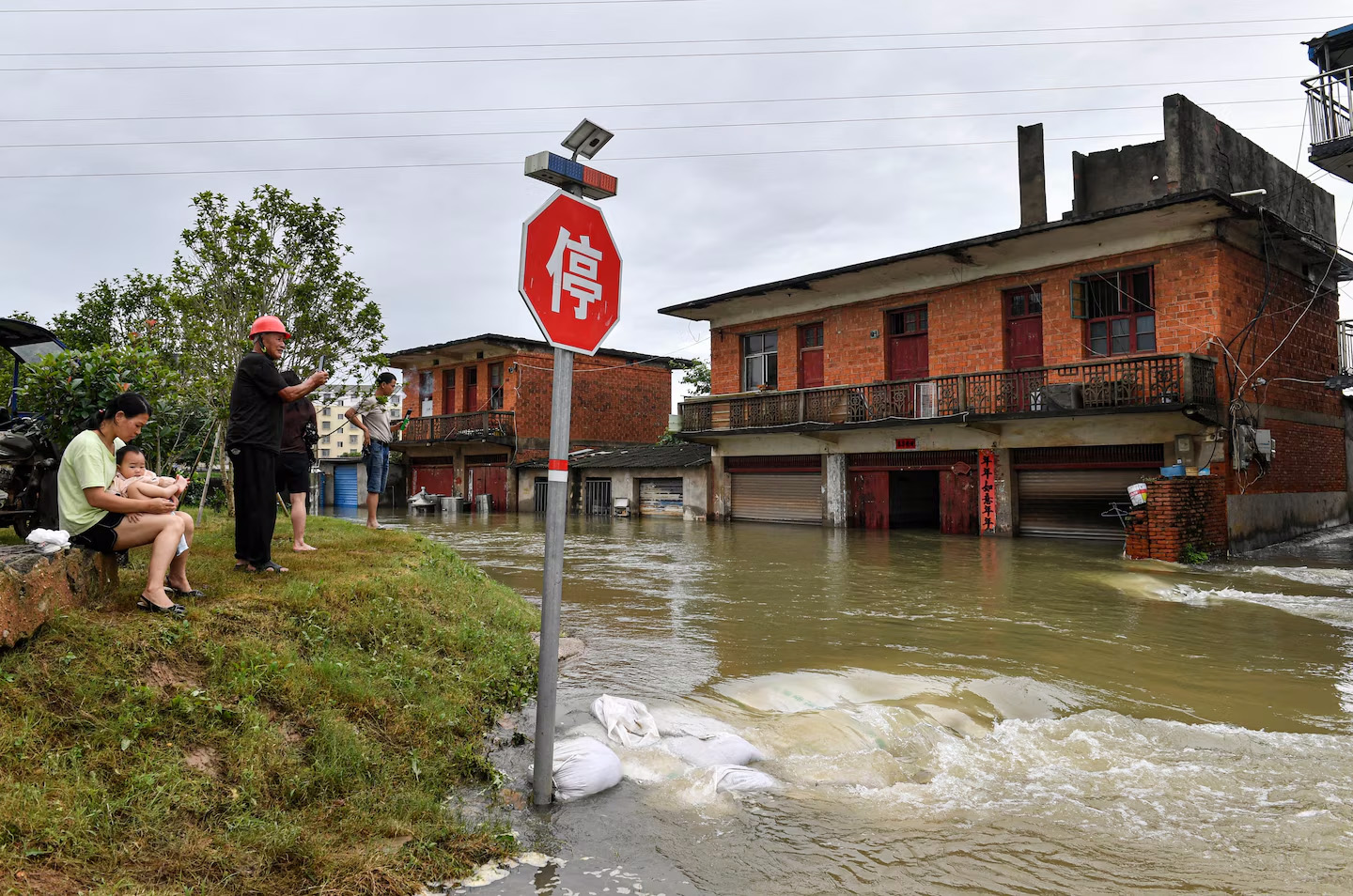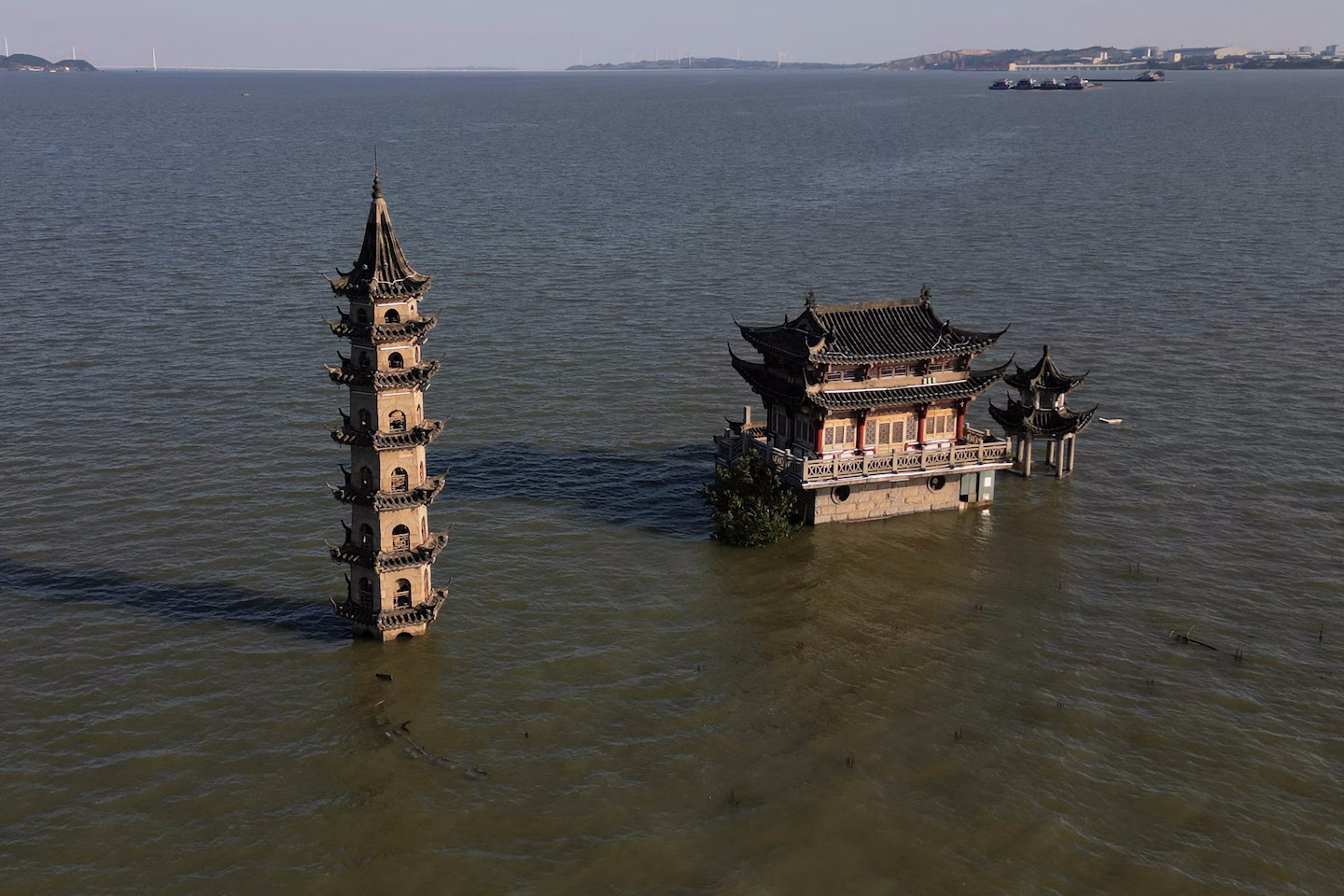
Three years after Zhengzhou was hit with China’s deadliest flash floods in decades, the central Chinese city was underwater once again.
For over three hours on Monday afternoon, 9.21 inches of rain fell on this city of 13 million — and forced an all-out effort to prevent a repeat of 2021, when 300 people died in a sudden deluge that flooded the subway and trapped people in submerged cars.
This time, local authorities weren’t taking chances. They canceled buses, closed tourist sites and warned residents to stay home. Water pumps were deployed to prevent underpasses from flooding. Subway entrances were barricaded with sandbags and metal sheeting.
China’s summer has begun with a huge emergency-response effort in multiple provinces to prevent extreme weather, now routine, from turning into a political and humanitarian crisis for the ruling Communist Party.
After last year’s record-breaking heat waves, June brought drought, floods and typhoons — sometimes quickly coming one after the other. Extreme heat delayed crop planting in the eastern province of Shandong weeks before it was hit with floods.
After decades of campaigning by climate activists that was largely ignored, Beijing has made adapting to bouts of extreme weather a greater policy priority. Last week, weather officials issued an unusually direct warning about the country’s vulnerability to intensifying heat and rainfall worsened by climate change.
A month earlier, the Ministry of Ecology and Environment had released its first progress report on adaptation to the threat of climate change, which highlighted the need for better early-warning systems and improved coordination among departments in charge of construction, water management, transportation and public health.
“When these departments are siloed off, it impedes a systematic response to climate,” said Liu Junyan, a Beijing-based campaigner for the environmental advocacy group Greenpeace. “We can’t miss the big picture because we’re all tucked away in different corners putting out our own crises.”
This coordination, Liu said, will be key to saving lives during this year’s floods, as will improving advanced notice for residents in the remote and mountainous countryside, where mitigation work remains weak.
Forecasts for the rest of July underscore a sense of urgency: Torrential rain is expected in 18 regions across the country. The government has sent in hundreds of soldiers, relocated tens of thousands of villagers, and allocated $200 million to aid disaster relief.
Some of the worst flooding this year has been in Hunan province along the middle stretch of the Yangtze River. There, four towns in Pingjiang county were evacuated Tuesday.
A 740-foot breach in the dikes of China’s second-largest freshwater lake over the weekend has reignited debate about farmland and industrialization encroaching on wetland that is better at absorbing rainfall.

Workers repair a breach on the embankment of Dongting Lake in Huarong county, in Hunan province, on Sunday. (AFP/Getty Images)

An overflowing river floods Pingjiang county of Yueyang, Hunan province, on July 2. (CNS Photo/Reuters)
China’s climate-change adaptation problem is worsened by vast differences in wealth and geography. The country’s 1.4 billion people mostly live in dense concrete sprawl prone to flash flooding during downpours. Factories and financial centers are concentrated along the low-lying east coast.
While local governments recognize the importance of climate change, “differences in economic development between regions mean there are gaps in capacity for disaster prevention, resistance and response,” said Tang Xu, a professor of atmospheric sciences at Fudan University in Shanghai.
Tang, who previously served as director of the Shanghai Meteorological Bureau, reels off the disasters that regions faced in recent years — drought in the northwest, landslides and mudslides in the southwest, typhoons and storm surges on the east coast — to underscore why “disaster prevention is a formidable task.”
The result, according to Tang, is that some places are moving fast to find and address risks while others take their time — but at least everyone is now aware of the issues. “You can’t use the same standard to say who’s doing a good job and who’s doing a bad job,” he said.
The central government in Beijing is increasingly asking local officials to do better.
China is especially vulnerable to extreme weather intensified by climate change, China’s Meteorological Administration underscored in its annual “blue book” on the topic released last Thursday. The report laid out mounting evidence of the threat, such as record-breaking temperatures last year that melted glaciers and permafrost at speeds never seen before.


More dramatic than the report were a weather official’s unusually stark warnings of worse to come.
Speaking at a news conference to launch the report, Yuan Jiashuang, deputy director of the administration, told journalists that heat waves will scorch China for 15 more days a year and reach temperatures 3 to 5 degrees Fahrenheit higher within 30 years.
Yuan highlighted that parts of Xinjiang will be among the most severely affected regions. Last July, temperatures in its Turpan Depression, which sits 500 feet below sea level, reached 126 degrees Fahrenheit, China’s highest on record.
Over the same period, downpours lasting five days and concentrated in the center and northeast of the country are expected to become more frequent, until eventually more rain and snow will fall during extreme weather events than as normal precipitation, Yuan said.
The Chinese government only recently began warning openly of the dangers of climate change. For decades, officials accepted the science but argued that responsibility lay with richer developed nations like the United States, which has released more carbon dioxide historically.
That position became harder to sustain as the country’s reliance on coal-fired power and its massive construction boom made it the world’s leading emitter of greenhouse gases.

Floodwater partially submerges a temple and pagoda atop Luoxingdun island, in Lushan, Jiangxi province, on July 4. (Josh Arslan/Reuters)
Within China, a gradually warming atmosphere took a back seat to concerns about clearing hazardous smog that blanketed major cities. Public discussion and scientific research on the topic were limited compared with that in Europe or North America.
That situation has changed dramatically in recent years, in part because Chinese leader Xi Jinping wants to be seen as a global leader on climate issues. Green technologies are also now a critical driver of the Chinese economy.
China brought more solar panels online last year than the rest of the world combined, and the country is projected by the International Energy Agency to account for 60 percent of global renewable energy installations by 2028.
Experts on Chinese energy systems widely believe that the country could reach peak carbon dioxide emissions ahead of the official goal of “before 2030” — if Beijing keeps a check on local governments that keep approving new coal-fired power plants.